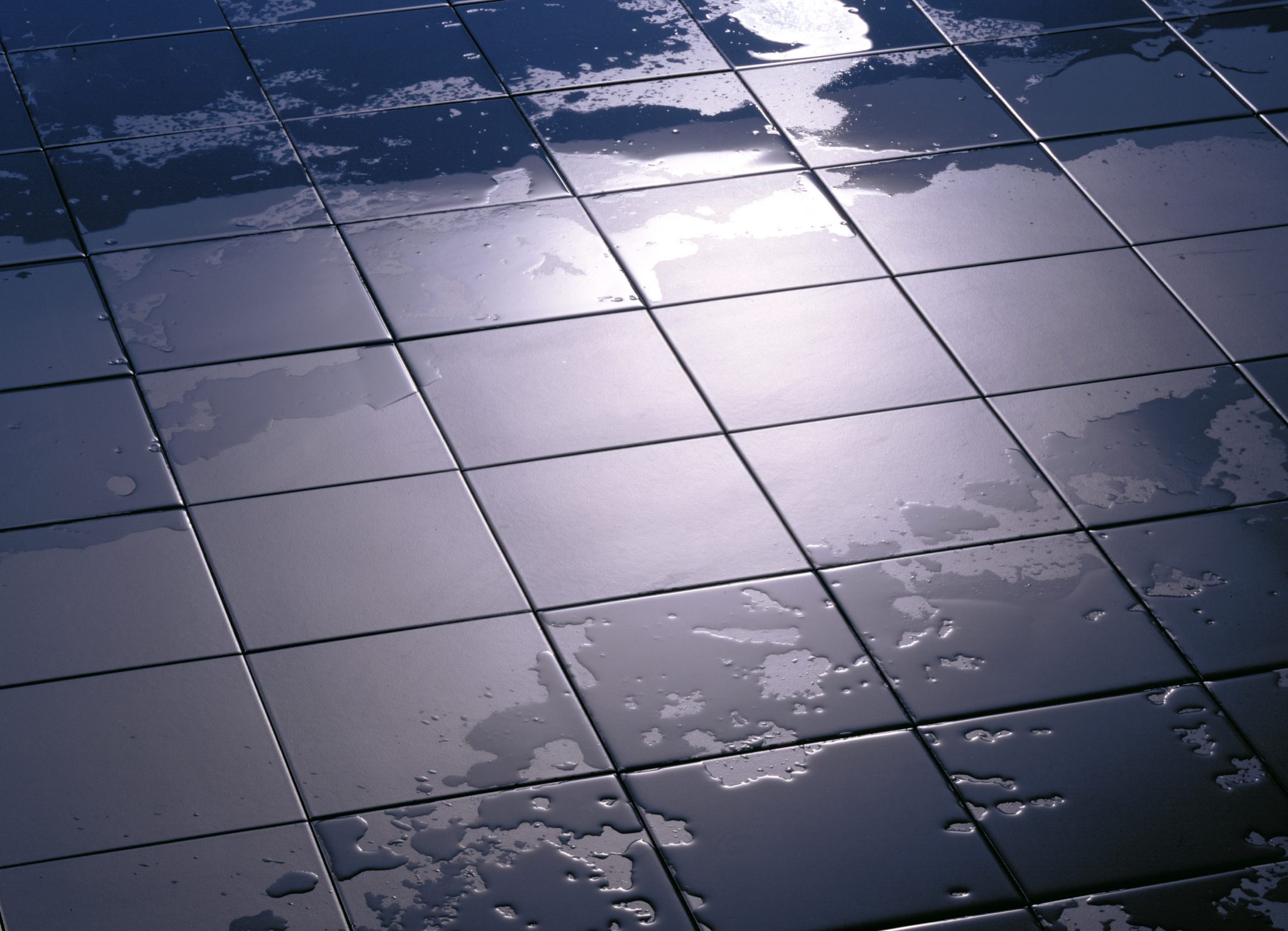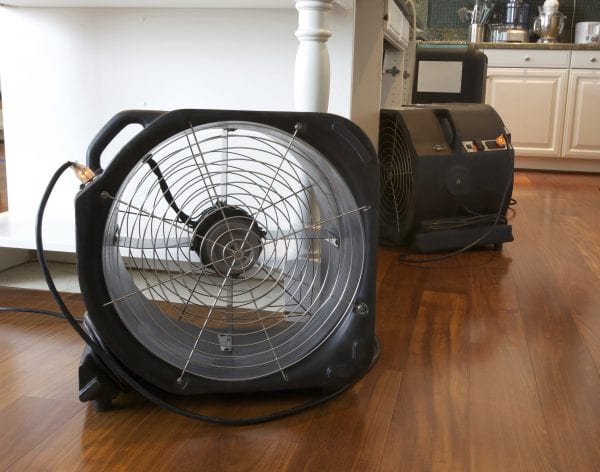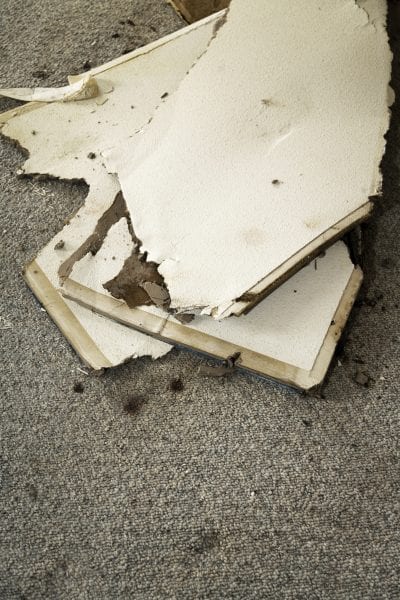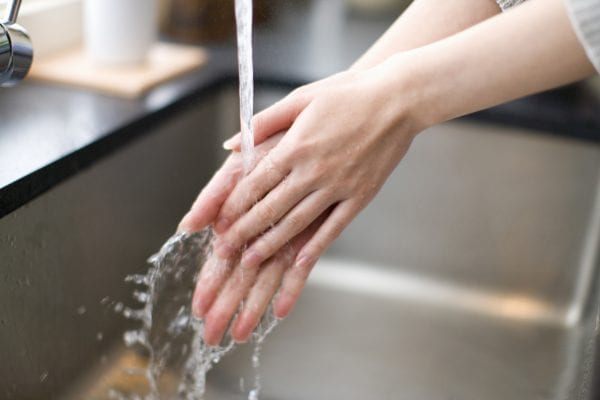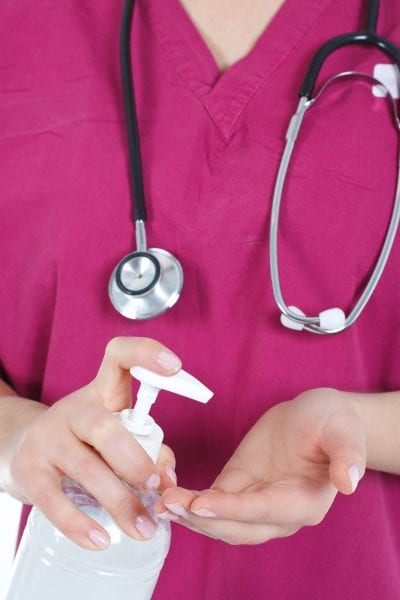Emergency Handbook

Before entering any building after a flood, make sure it is structurally sound and safe to enter. If you are not sure, ask local officials for advice.
Drying Out the House
To begin, remove as much water as possible, using pumps, wet-dry vacuums, squeegees, etc. A basement filled with water should be emptied about one-third per day. Rapid water removal may cause the basement walls to collapse. Mechanically remove as much water as possible; this is easier than drying by evaporation. Remove mud and silt. If flooding involved polluted water (chemicals, sewage, etc.), additional cleaning and sanitizing will be necessary.
Once all liquid water has been removed, the wet building will need to be dried out, and contents will need to be dried or thrown away. If electricity is available, fans greatly increase the evaporation rate if the air the fan is moving is dry. Fans must be combined with a method of removing moisture from the air, such as some type of dehumidification or ventilation air exchange pulling in warm, dry exterior air and exhausting damp inside air. Electric space heaters can provide heat, but large heaters are required to warm the air enough to efficiently dry. Fuel-fired heaters produce large amounts of moisture, so they are of limited value unless the heaters are vented to the outdoors. Burning a gallon of kerosene produces about a gallon of moisture. Professional equipment includes refrigerant and desiccant dryers.
Walls that have gotten wet must be completely dried out before they can be rebuilt. Mold will grow in wet walls that are closed up before they dry. Sometimes wet plaster can be recovered if it has not separated from the lath. Usually, wall board or plaster is torn out to the flood line in increments of 2 feet (for example, 2 feet, 4 feet or 6 feet), and replaced by half or whole sheets of drywall. If future flooding is a possibility, consider using paperless (mold proof) drywall. Wet insulation must be discarded. If moldy, wall cavities need to be cleaned. Walls are then allowed to dry before being closed up.
Mold can be a health hazard and must be removed before the house can be lived in.
Know What You Are Dealing With
There are three types of floodwaters.
Clean Water: Water is clean and poses no threat to human health. This could be from a roof leak or a broken water pipe. This type is also called Category 1.
Gray Water: Water contains significant chemical, biological, or physical contamination. This water can cause discomfort or sickness in humans. This type is also called Category 2.
Black Water: Water contains biological agents coming from sewage or other sources that are likely to cause discomfort or illness. All seawater, ground surface water, or waters rising from rivers or streams fall into this category. This type is also called Category 3. This water will have silt in it and perhaps other foreign matter and is considered very unsanitary.
For both gray water and black water, special measures are needed for cleanup and sanitizing. Professionals with specialized training are best equipped to work in areas with such contamination. If you must enter, be sure to wear gloves, boots, goggles, a suitable respirator, and protective clothing. This contamination poses significant health threats. Use cleaners to wash all flooded surface, then sanitize using a solution of 1 cup of chlorine bleach to 1 gallon of water. The surface should stay moist for 10 to 15 minutes for the sanitizing to occur.
Wash Your Hands
Always wash your hands with soap and boiled or disinfected water before preparing or eating food, after toilet use, after participating in cleanup activities, and after handling articles contaminated by floodwater or sewage. Use warm water when available. Wash children’s hands frequently and always before meals.
Disinfect water for washing by mixing 1/8 teaspoon of household bleach with 1 gallon of water. Let it stand for 30 minutes. If the water is cloudy, use a solution of 1/4 tsp of household bleach per 1 gallon of water. If water isn’t available, use alcohol-based products made for washing hands.
Preventing Illness
Diarrhea, upset stomach, colds, and other respiratory illnesses sometimes occur after a disaster, particularly among large groups of people in a shelter. Basic hygiene measures such as frequent hand washing or use of an alcohol-based hand gel, especially after using the restroom or changing diapers and before eating, can help prevent these.
Used by permission of eXtension.org.
Use pesticides only according to the directions on the label. Follow all directions, precautions, and restrictions that are listed. Do not use pesticides on plants that are not listed on the label. Trade and brand names used are given for information purposes only. No guarantee, endorsement, or discrimination among comparable products is intended or implied by the Alabama Cooperative Extension System. This publication is for information purposes only and should not be a substitute for recommendations or treatment by a health care provider.

